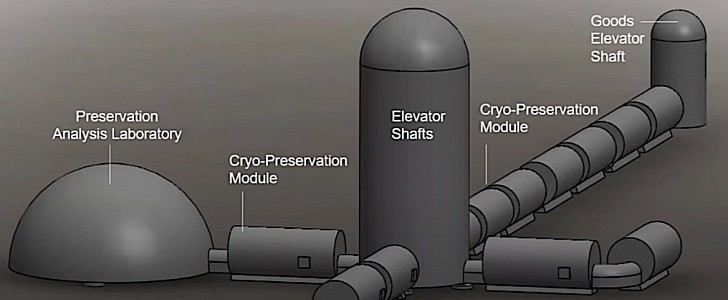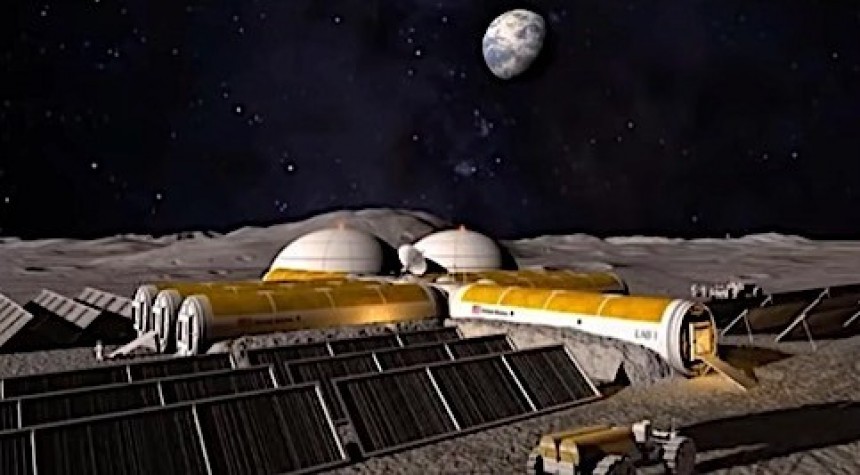It didn’t take long for us humans to become individually aware of our own mortality. It did however take a lot longer for humans as a species to understand that there are forces out there that could wipe us out, as a species, in the blink of an eye. And even now, when we know this, just very few of us are willing to dream up ways to ensure our survival.
There are many ways our civilization could end, or at least be drastically changed, and they range from human-made perils to natural ones, born here on Earth or up there in space. Sadly, even with our current level of technology, we’re probably unable to defend against many of them.
We’re not yet at a stage when we can defend the planet against dangerous asteroids (granted, work on this will begin soon). We’re not at a stage when we can somehow upload our consciousness in a cloud somewhere, so we can be brought back whenever the danger has passed. But we are at a stage when we can do something that could ensure the survival of a lucky few in a post-apocalyptic world.
Most of you probably remember the biblical story of Noah, and how he helped save the animal and plant species of the world from a massive flood, by means of a wooden ark and incredible determination. That, we can do, and we’ve already started.
Back in 2008, the so-called Svalbard Global Seed Vault opened on the Norwegian island of Spitsbergen. It’s the place where much of the world's crop diversity is currently being stored, in the event a disaster, small or great, somehow endangers the world’s food supply.
There are no animals there, of course, only plant seeds, meaning the food people would need to restart agriculture after a cataclysmic event, or after the disappearance of a certain plant species for one reason or another.
The vault has a capacity of over 4.5 million seed samples, and in June of this year the count of stored seeds was up to over 1 million. And they’re all in danger, should the cataclysm they’re meant to survive is global in nature, and violent enough to pretty much destroy all we've built on the planet, including the vault.
This is why we should probably start thinking of creating such a doomsday vault on another world. And that’s exactly what a team from the University of Arizona is proposing.
We’ve known for a while now our planet’s natural satellite has underground lava tubes, created billions of years ago by the then-active lava moving through the rock. These tubes at times created underground caves, some of them 100 meters (328 feet) in diameter, that could form the perfect location for storing seeds off-world, sheltering Earth’s life samples against solar radiation, meteorites and temperature changes.
The team of undergraduate and graduate students led by University of Arizona’s Jekan Thanga proposed this solution during the IEEE Aerospace Conference back in March – a "modern global insurance policy" needed to ensure the survival of the human species in the face of a global cataclysm.
The paper calls for these lava tubes and caverns to be used as storage locations for seeds, and even cells, not only because they're located on another world, but because that world has the perfect conditions (cold, lack of air, and so on) to ensure the survival of the samples for hundreds of years.
The team calls for these places to be at first surveyed using flying and hopping robots called SphereX - Spherical Rocket Propelled Robots for Extreme Environment Exploration. These are round machines that can be deployed from a lander or a rover to study underground environments using stereo cameras and laser rangefinders.
Once a suitable location is found, these off-world doomsday vaults can be created, and they will require quite a bit of tech to function, including solar panels on the surface for power needs and elevators to provide access to and from the surface.
Inside the vaults, the seeds would be stored inside cryogenic preservation modules that can provide storage at minus 180 degrees Celsius (minus 292 Fahrenheit) for seeds, and at minus 196 degrees Celsius for stem cells (minus 320 Fahrenheit).
These modules will not be placed on the cavern floor, but on shelves that would float thanks to quantum levitation. There would be robots milling around on magnetic tracks.
Getting the seeds on location would not be such a big problem, according to the team. Calculations have shown it would take 250 rocket launches to move 50 examples of samples from each of the 6.7 million species of plants and animals on our world.
Sure, some could argue there is no need for us to save seeds in the face of an extinction-level event on Earth, given how there will be no humans to restart life. But it’s that kind of thinking that even now, after more than half a century of space exploration and a lot more years of us being in the loop when it comes to the dangers of asteroids, we have no protection in place against such events.
So maybe this Thanga ark, if it can be called that, could ensure human history does not end as that of other species in our past.
Full details on the idea can be found in the videos attached below.
We’re not yet at a stage when we can defend the planet against dangerous asteroids (granted, work on this will begin soon). We’re not at a stage when we can somehow upload our consciousness in a cloud somewhere, so we can be brought back whenever the danger has passed. But we are at a stage when we can do something that could ensure the survival of a lucky few in a post-apocalyptic world.
Most of you probably remember the biblical story of Noah, and how he helped save the animal and plant species of the world from a massive flood, by means of a wooden ark and incredible determination. That, we can do, and we’ve already started.
Back in 2008, the so-called Svalbard Global Seed Vault opened on the Norwegian island of Spitsbergen. It’s the place where much of the world's crop diversity is currently being stored, in the event a disaster, small or great, somehow endangers the world’s food supply.
There are no animals there, of course, only plant seeds, meaning the food people would need to restart agriculture after a cataclysmic event, or after the disappearance of a certain plant species for one reason or another.
This is why we should probably start thinking of creating such a doomsday vault on another world. And that’s exactly what a team from the University of Arizona is proposing.
We’ve known for a while now our planet’s natural satellite has underground lava tubes, created billions of years ago by the then-active lava moving through the rock. These tubes at times created underground caves, some of them 100 meters (328 feet) in diameter, that could form the perfect location for storing seeds off-world, sheltering Earth’s life samples against solar radiation, meteorites and temperature changes.
The team of undergraduate and graduate students led by University of Arizona’s Jekan Thanga proposed this solution during the IEEE Aerospace Conference back in March – a "modern global insurance policy" needed to ensure the survival of the human species in the face of a global cataclysm.
The paper calls for these lava tubes and caverns to be used as storage locations for seeds, and even cells, not only because they're located on another world, but because that world has the perfect conditions (cold, lack of air, and so on) to ensure the survival of the samples for hundreds of years.
Once a suitable location is found, these off-world doomsday vaults can be created, and they will require quite a bit of tech to function, including solar panels on the surface for power needs and elevators to provide access to and from the surface.
Inside the vaults, the seeds would be stored inside cryogenic preservation modules that can provide storage at minus 180 degrees Celsius (minus 292 Fahrenheit) for seeds, and at minus 196 degrees Celsius for stem cells (minus 320 Fahrenheit).
These modules will not be placed on the cavern floor, but on shelves that would float thanks to quantum levitation. There would be robots milling around on magnetic tracks.
Getting the seeds on location would not be such a big problem, according to the team. Calculations have shown it would take 250 rocket launches to move 50 examples of samples from each of the 6.7 million species of plants and animals on our world.
Sure, some could argue there is no need for us to save seeds in the face of an extinction-level event on Earth, given how there will be no humans to restart life. But it’s that kind of thinking that even now, after more than half a century of space exploration and a lot more years of us being in the loop when it comes to the dangers of asteroids, we have no protection in place against such events.
So maybe this Thanga ark, if it can be called that, could ensure human history does not end as that of other species in our past.
Full details on the idea can be found in the videos attached below.










